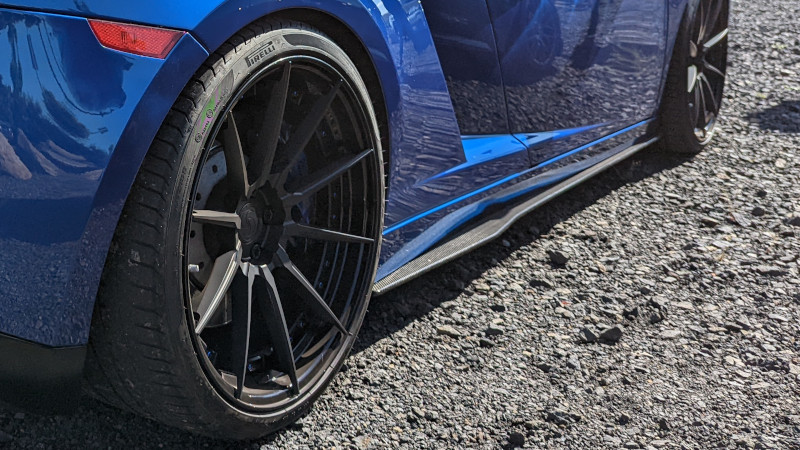Tire traction is critical for maintaining control over your vehicle. Did you know that the amount of traction available can change based on the weight transfer of your vehicle?
Understanding proper weight transfer can mean the difference between negotiating a turn and sliding off the road. Here is a quick introduction into the fundamental driving concepts of traction, weight transfer, and the traction circle.
What is Traction?
To understand how traction works, a quick physics lesson is in order. Don’t worry, this should be more relatable than your high school physics class.
Static and Kinetic Friction

Static friction is the amount of force it takes to start sliding an object that is stationary. Kinetic friction is the amount of force required to continue sliding that object. It always takes more force to start sliding an object than it does to continue pushing that object.
You can test this on your desk with your phone. Gently press one finger against your phone until it starts to slide. Note how it takes less pressure on the phone to maintain that slide.
How Friction Relates to Tire Traction
Traction is the amount of static friction between your tire and the road. When a tire is rolling, this is considered static friction. Although the tire is rotating, a single contact patch of the tire is stationary on the surface of the road at any given point in time.
If the tire starts to slide, it stops spinning. This is kinetic friction. Since the level of static friction is always higher than kinetic friction, a rolling tire has more grip than a sliding tire.
What is Weight Transfer?
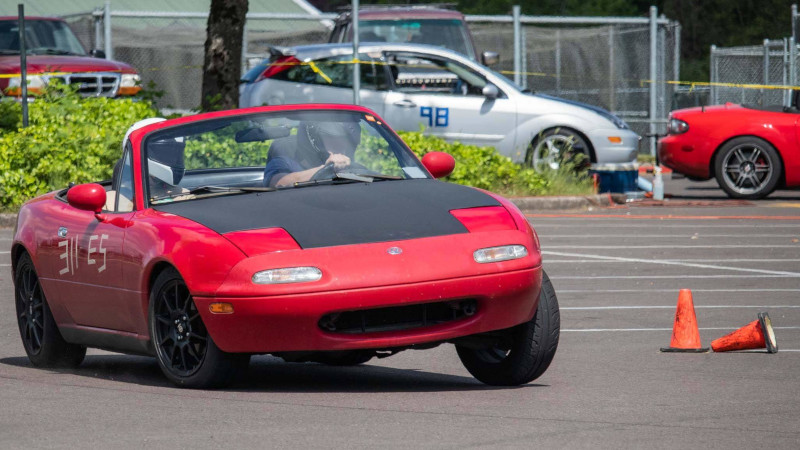
The level of friction between two objects is determined by the surface of the two materials and the amount of force pressing them together. The heavier an object, the more friction it has.
Weight transfer is the art of putting weight over the tires that need traction the most. This happens through natural suspension compression as you accelerate, brake, and turn.
When you brake, your front tires gain grip as the weight shifts forward. When you turn, this weight shifts to the tires on the outside of the turn. When you accelerate, this weight shifts rearward.
What is Oversteer?
Oversteer is a loss of rear tire grip. While turning, a loss of rear tire grip will cause the car to over-rotate. If the weight shifts too far toward the nose of the vehicle, your car is more likely to oversteer.
Oversteer can be corrected by steering in the direction you want to go, with a very slight correction in the opposite direction. Be careful not to over-correct, and this will cause the rear end to swing violently in the other direction. This pendulum effect can be much harder to control than the initial slide.
What is Understeer?
Understeer is the result of the front tires losing grip. If you are in a turn, you will feel the car start to push toward the outside of the turn, rather than the direction you’re turning the steering wheel.
Many auto manufacturers build cars to understeer by default, rather than oversteer. Understeer is typically easier and more intuitive to control. When you attempt to accelerate and steer at the same time, your car is more likely to understeer.
Why Does Weight Transfer Matter?
The closer you get to the limit of traction, the more important weight transfer becomes. This is why understanding weight transfer is critical for auto racing and driving in inclement weather. In both cases, drivers may be pushing their cars right to the limit (or even over the limit) of available traction.
What is the Traction Circle?
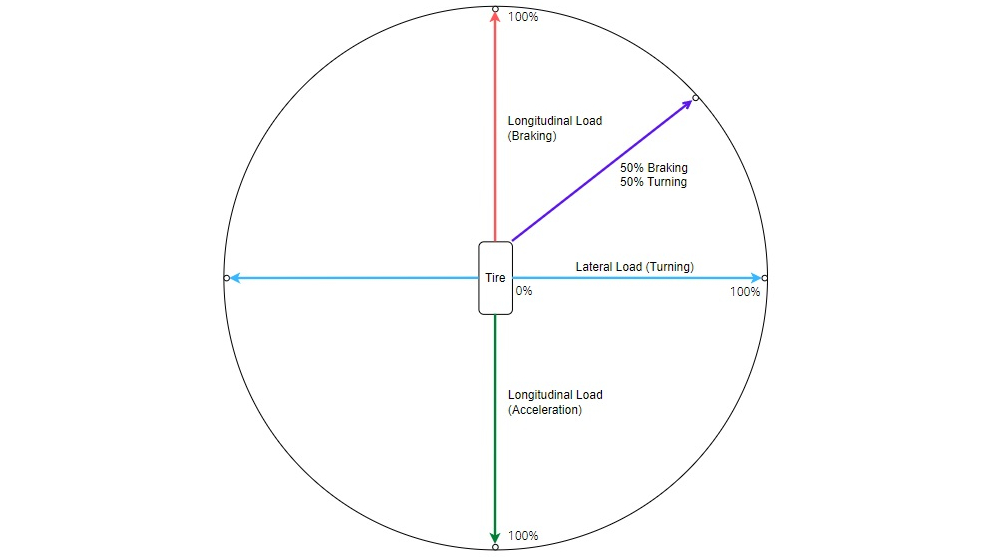
The traction circle (also called the “friction circle”) is a conceptual diagram intended to aid in the understanding of how a tire maintains grip as weight transfers dynamically.
Each tire can only do so much at once. If you’re braking at 100%, asking your car to turn at the same time may result in the car plowing forward. If you’re turning at 100%, asking the car to brake at the same time could induce abrupt oversteer and cause a spin.
Tips to Maximize Tire Traction
There are several steps you can take to maximize tire traction, both with your equipment and your driving technique. Here are a few ideas to get you started.
1) Pick The Right Tires
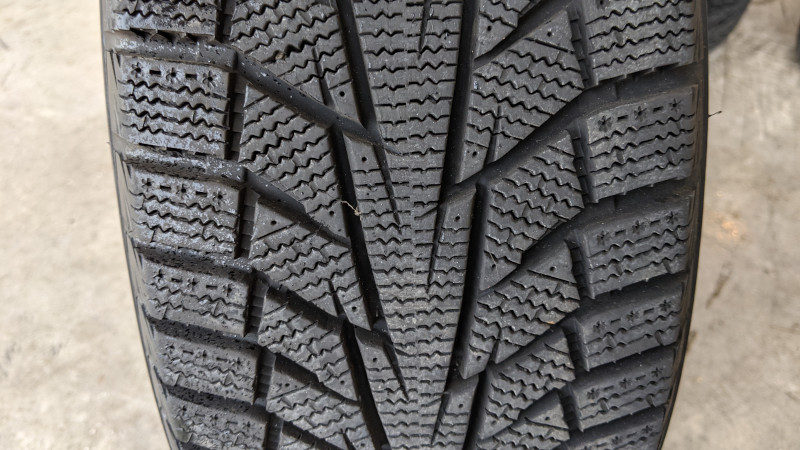
Your tires are some of the most important components on your vehicle, and the only parts that contact the road. There are countless tires on the market, each with their own tradeoffs between differing climates and road surfaces.
First, determine what road conditions and temperatures you will encounter in your day to day life. Do you live in a cold climate that sees lots of snow? Perhaps you live in a warmer climate that only sees dry roads with occasional rain. These factors will impact your ideal tire choice.
If you see snow in the wintertime, consider running a separate set of winter wheels and tires. Nothing beats a dedicated winter tire on ice and snow.
Tire technology has come a long way, and you will actually find some all season tires sporting the traction snowflake as well. These are a great compromise for climates that only see snow once or twice a year. These tires tend to perform admirably on dry and rain-soaked roads.
2) Brake in a Straight Line
In general, you want to apply the brakes in a straight line. This is especially important in slippery conditions. Braking and turning at the same time could easily overwhelm the rear tires. If your rear tires give up while you’re turning, this could lead to a spin and loss of control.
3) Use Smooth Inputs

Try not to steer aggressively or abruptly shift the weight of the vehicle. Smooth inputs are important for maintaining traction when you’re near the limit of grip. If you use smooth inputs, it is much easier to give a subtle correction if your car starts to slide.
4) Look Far Ahead (Use Good Vision)

It might seem counterintuitive that your eyes can impact your traction. However, using good vision to look far down the road will reduce the chance of needing sudden inputs to slow down or correct the vehicle’s path.
Make sure you keep a safe following distance and brake really early when the weather is bad. It might surprise you just how long it takes to stop when the roads are icy.
5) Straighten the Wheel, Weight Over The Nose (Understeer)
If you start to understeer, you can add grip to the front tires by either straightening out the steering wheel or shifting a little weight to the front tires.
Be careful you don’t shift too much weight forward; this could leave the rear tires with little grip, causing snap oversteer (sudden oversteer that is much harder to correct).
6) Use Sandbags (Rear Wheel Drive)
Throwing some weight in the bed of a truck or other rear wheel drive vehicle is a great way to put a little more weight over the rear tires. Trucks tend to be rear wheel drive by default, unless they have a 4×4 mode.
Putting a bit more weight in the rear can help you get moving if the rear tires don’t have enough grip. Adding a bit of weight to the rear may also help you stop faster in some cases. When you have more weight over the rear, the rear brakes and tires can sometimes do a better job of helping to stop the vehicle.
If you place more weight in the rear, secure it as best as you can so it doesn’t slide around while you drive. A sudden shift in a heavy load is a fantastic way to induce a spin. Check your owner’s manual to make sure you aren’t overloading the vehicle if you decide to try this.
7) Tire Socks or Chains (Traction Devices)
If road conditions are really bad, local law enforcement may ask you to install chains or tire socks on your tires before you can proceed. It’s a good idea to carry chains or auto socks with you when you traverse a snowy mountain pass. It’s easy to get stuck on steep hills.
Make sure you know how to install your traction device of choice, and read the manufacturer’s installation and usage instructions. Many of these devices have maximum speed limits, and these speed limits can be quite slow (like, 25 mph slow).
How Do You Know Your Tires Have Traction?
There are several ways you can know if your tires have traction. If your wheels are spinning normally and you don’t feel any unusual vibrations through the vehicle’s controls, chances are you have traction at that moment.
If you see an ABS light or a traction control light on the dash, you know that at least one of your tires have reached the limit of grip, and the car’s computers are doing their best to keep the tire rolling.
Pay attention to the feedback from the seat and the steering wheel. As the front tires lose grip, the steering wheel will often feel lighter and the feedback will become more vague. This can even happen right before you’ve lost traction as the front tires start to give up.
As the rear tires give up, you may feel a change in vibration through the seat (and even slightly through the wheel). A slipping rear tire may feel a bit like a rumble through the seat, much like the force feedback in a video game controller.
If your ABS engages, you’ll feel a pulsing under the brake pedal. This pulsing sensation is the ABS module quickly grabbing and releasing the brakes to keep the tire rolling while maximizing braking force.
Your Next Steps
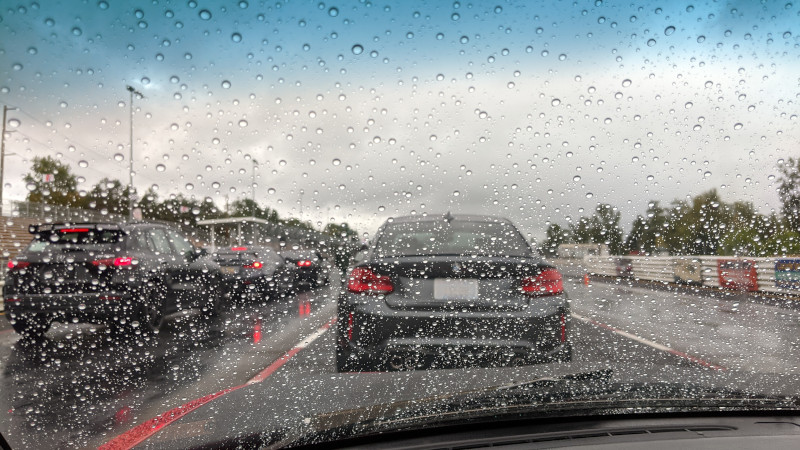
Weight transfer is both an art and a science, and takes many hours of practice to fully understand. If you have any doubts about the physics of your vehicle after reading this article, consider taking a car control course run by a professional driving school.
Many car control courses have student vehicles you can drive, which eliminates any concerns about wear and tear on your own vehicle. Some courses simulate traction loss with a skid car. Others focus on the traction circle through high performance driving.
Unfortunately, many driver’s education courses do little to practice driving in inclement weather. It’s important to understand vehicle dynamics so you’re prepared as we head into winter. Stay safe out there, and never stop learning.
